Abstract
JP-8 jet fuel (similar to commercial/international jet A-1 fuel) is the standard military fuel for all types of vehicles, including the U.S. Air Force aircraft inventory. As such, JP-8 presents the most common chemical exposure in the Air Force, particularly for flight and ground crew personnel during preflight operations and for maintenance personnel performing routine tasks. Personal exposure at an Air Force base occurs through occupational exposure for personnel involved with fuel and aircraft handling and/or through incidental exposure, primarily through inhalation of ambient fuel vapors. Because JP-8 is less volatile than its predecessor fuel (JP-4), contact with liquid fuel on skin and clothing may result in prolonged exposure. The slowly evaporating JP-8 fuel tends to linger on exposed personnel during their interaction with their previously unexposed colleagues. To begin to assess the relative exposures, we made ambient air measurements and used recently developed methods for collecting exhaled breath in special containers. We then analyzed for certain volatile marker compounds for JP-8, as well as for some aromatic hydrocarbons (especially benzene) that are related to long-term health risks. Ambient samples were collected by using compact, battery-operated, personal whole-air samplers that have recently been developed as commercial products; breath samples were collected using our single-breath canister method that uses 1-L canisters fitted with valves and small disposable breathing tubes. We collected breath samples from various groups of Air Force personnel and found a demonstrable JP-8 exposure for all subjects, ranging from slight elevations as compared to a control cohort to > 100 [mutilpe] the control values. This work suggests that further studies should be performed on specific issues to obtain pertinent exposure data. The data can be applied to assessments of health outcomes and to recommendations for changes in the use of personal protective equipment that optimize risk reduction without undue impact on a mission.
Full text
PDF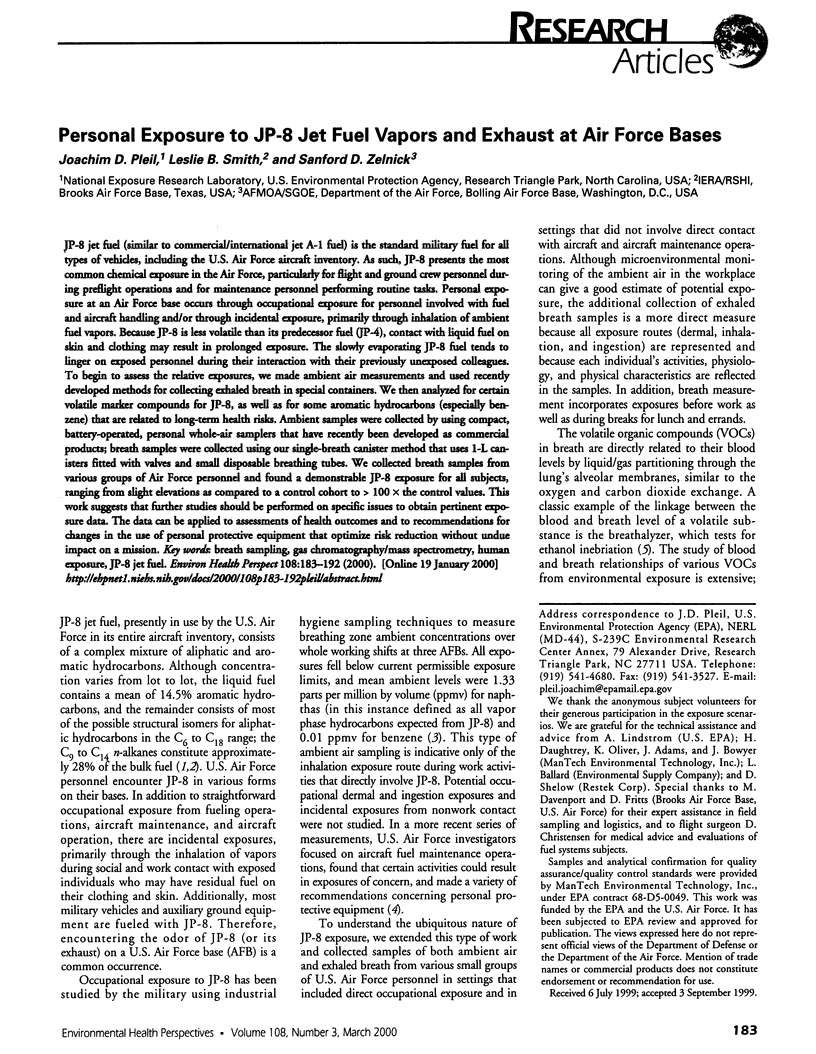
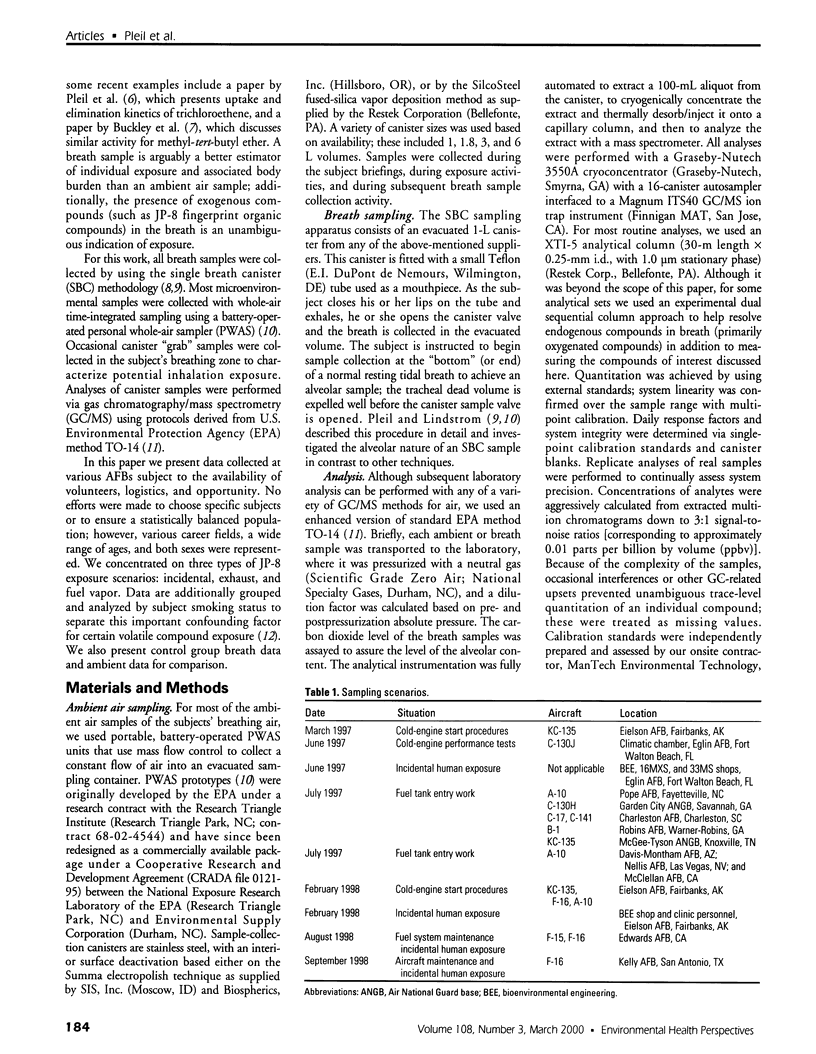

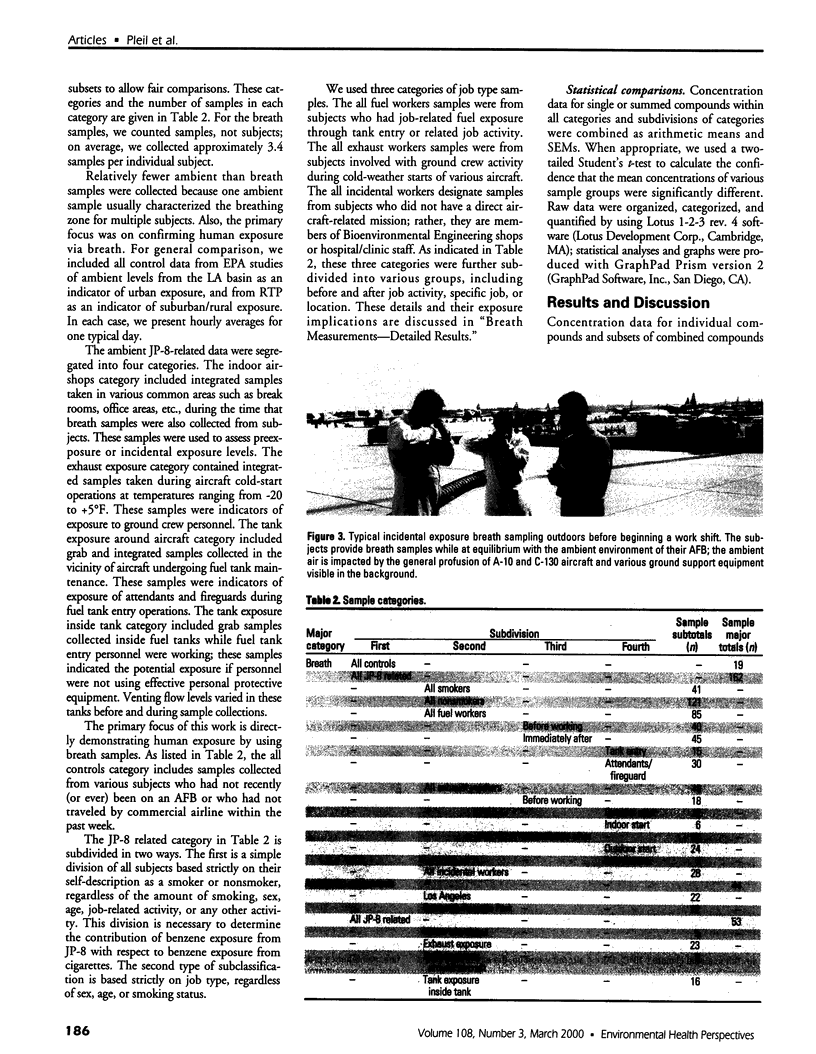
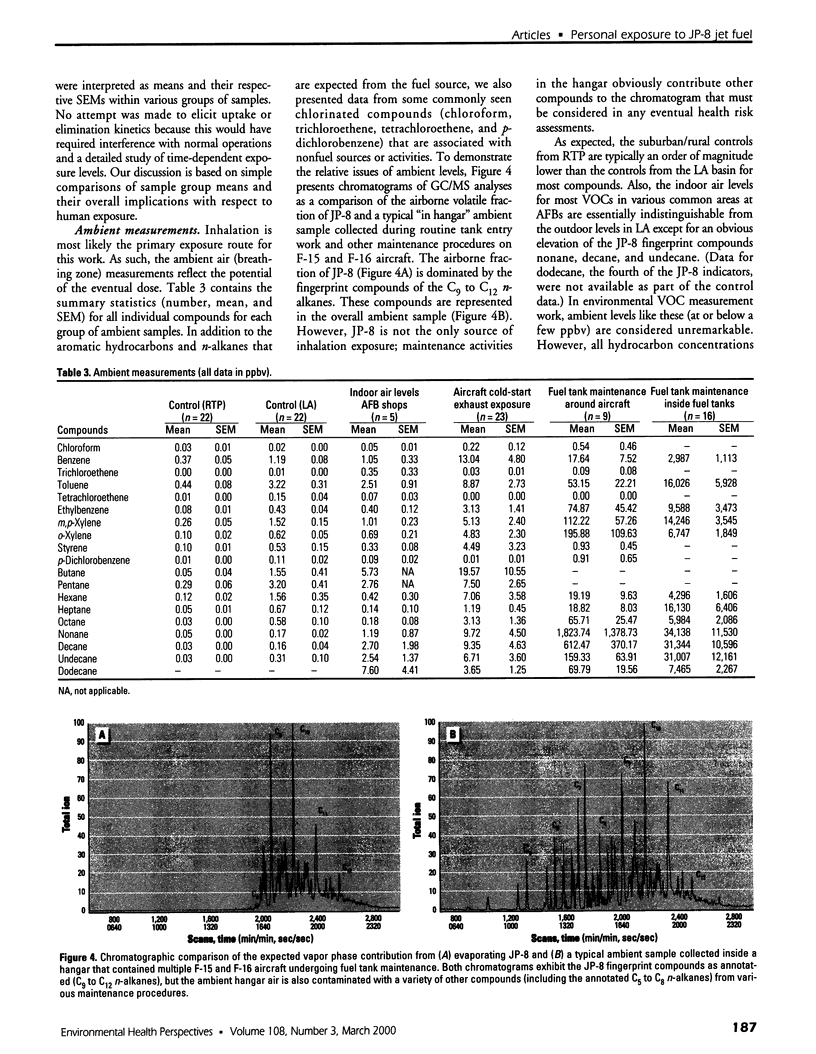
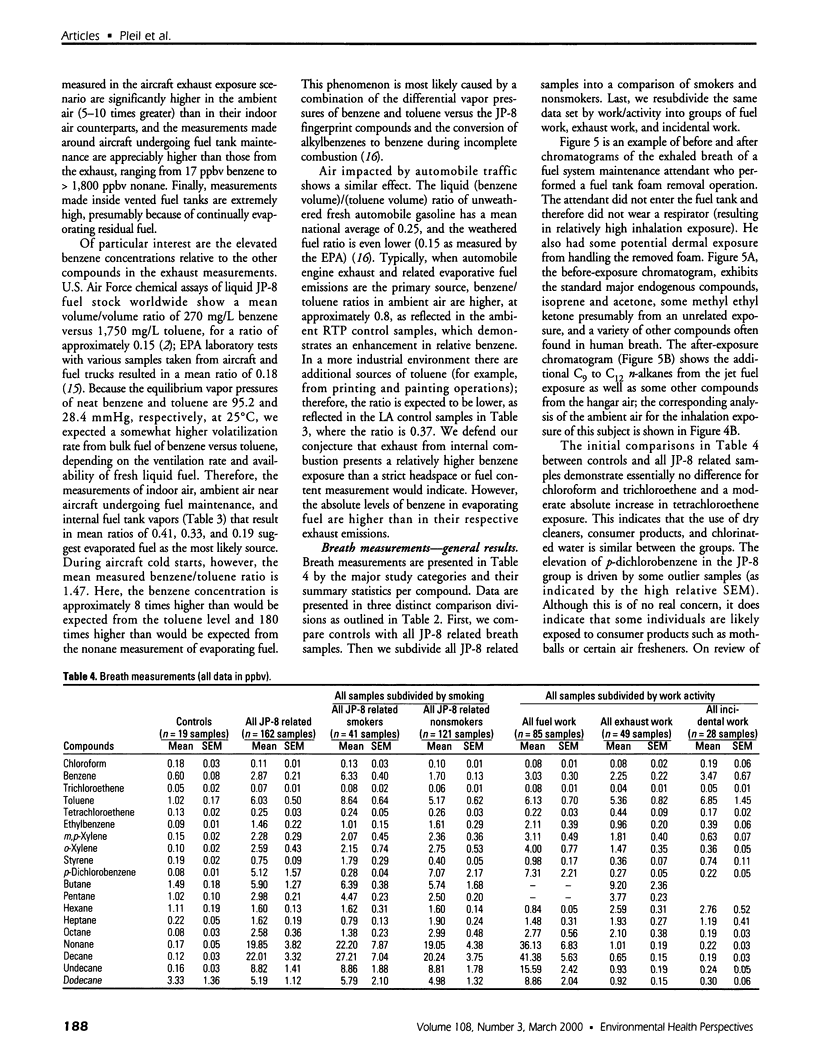
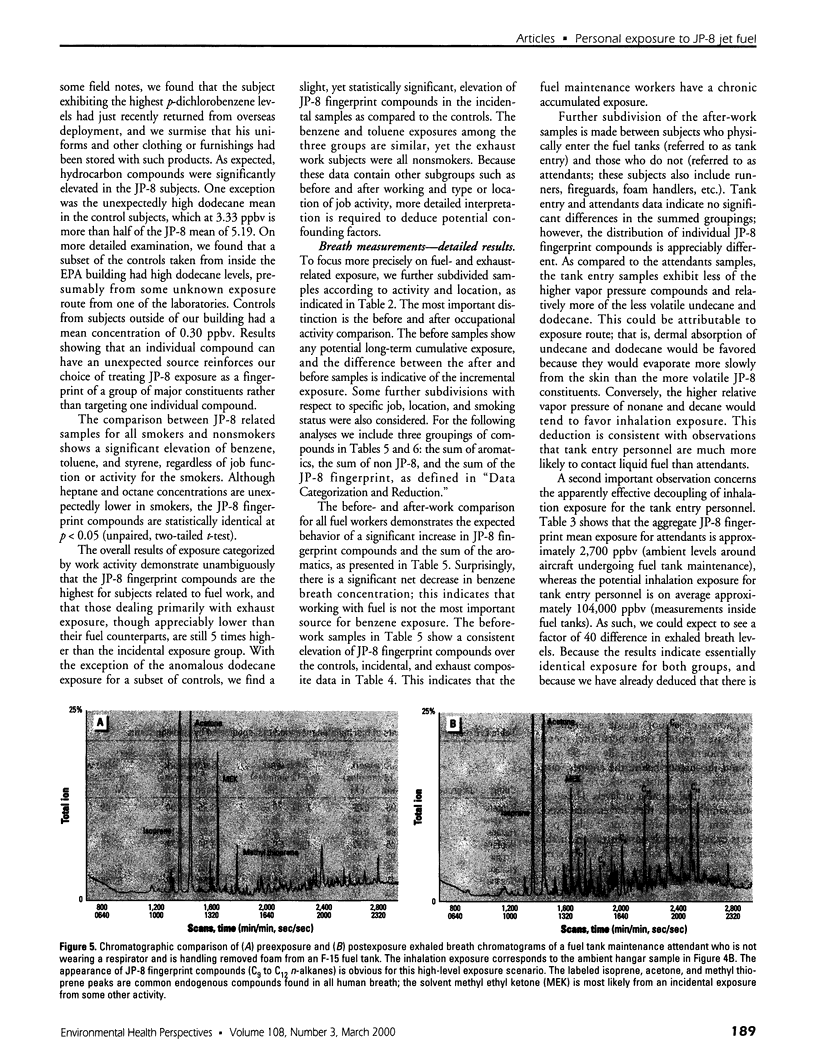
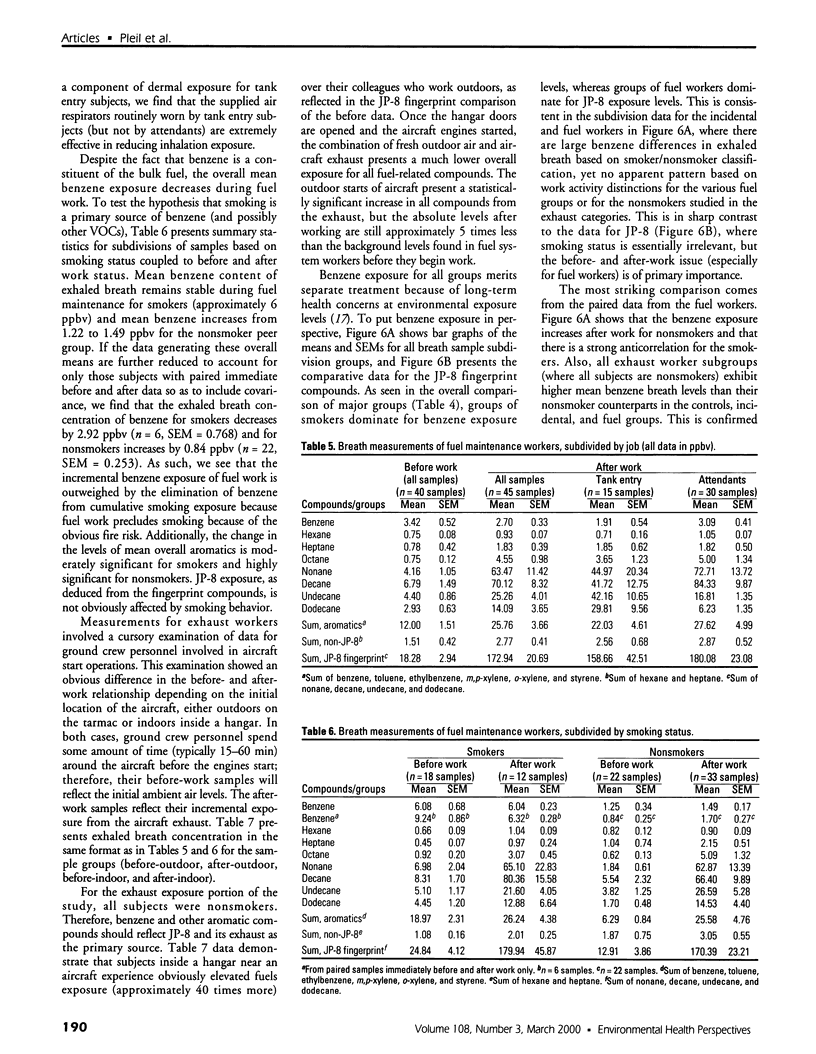
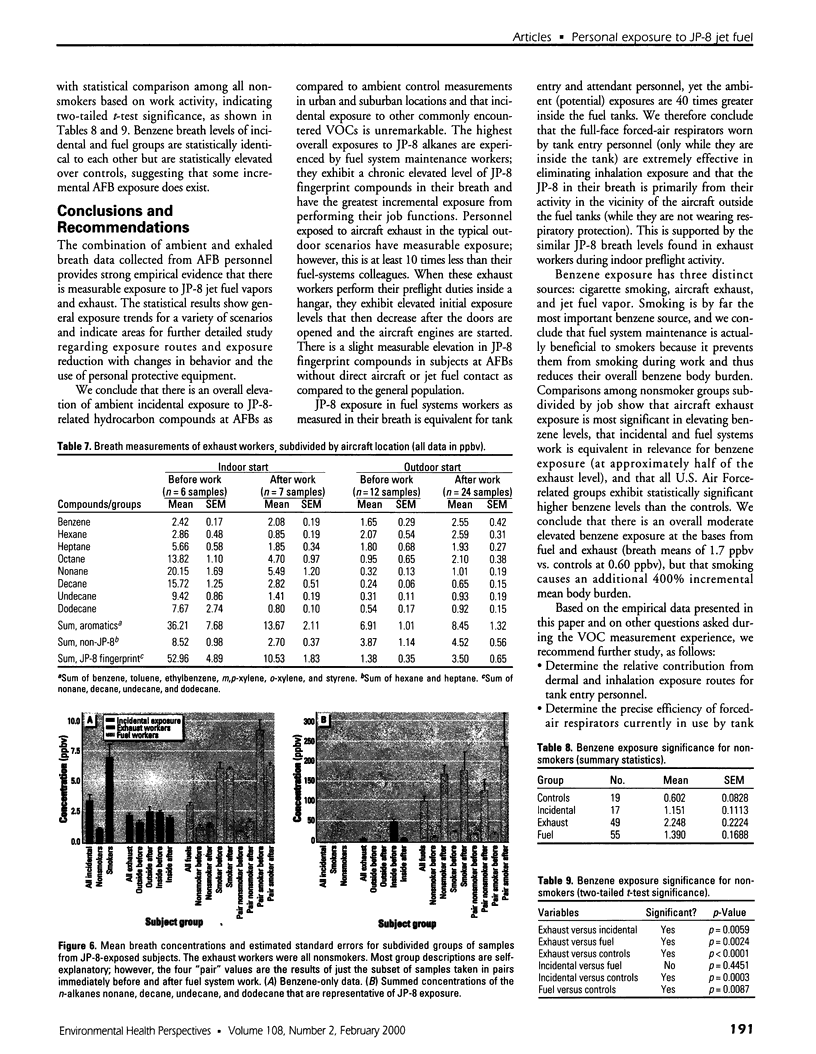
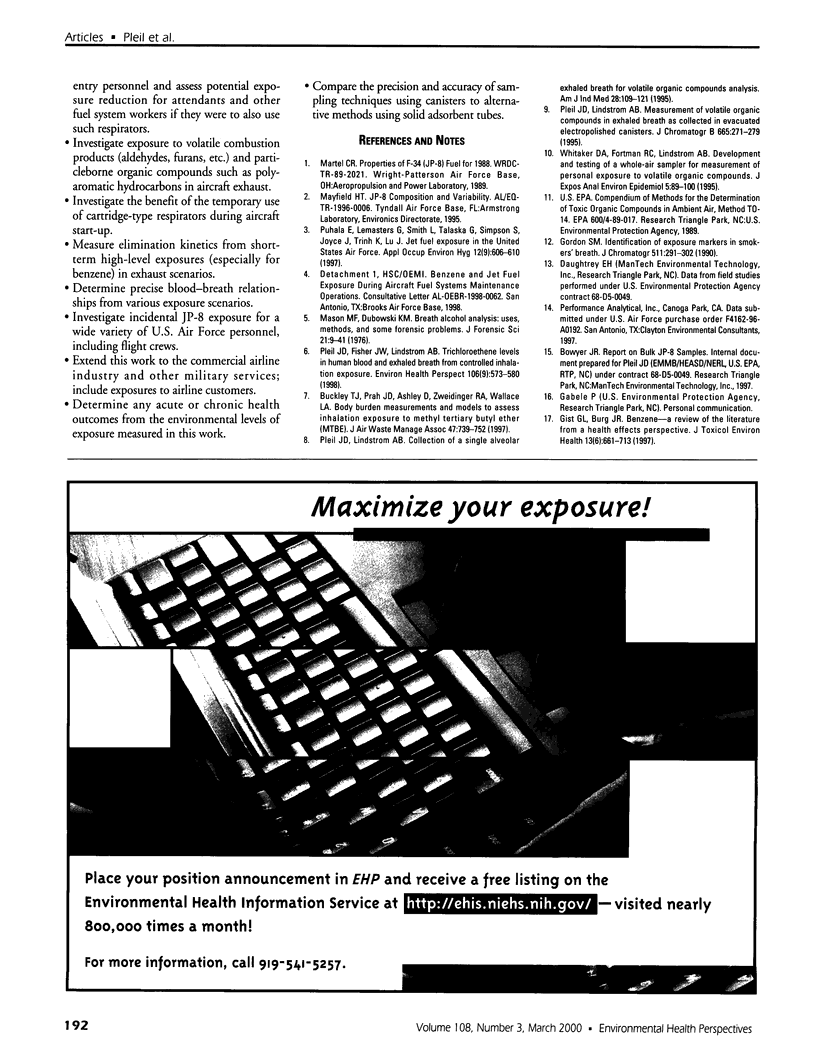
Images in this article
Selected References
These references are in PubMed. This may not be the complete list of references from this article.
- Buckley T. J., Prah J. D., Ashley D., Zweidinger R. A., Wallace L. A. Body burden measurements and models to assess inhalation exposure to methyl tertiary butyl ether (MTBE). J Air Waste Manag Assoc. 1997 Jul;47(7):739–752. doi: 10.1080/10473289.1997.10463934. [DOI] [PubMed] [Google Scholar]
- Gist G. L., Burg J. R. Benzene--a review of the literature from a health effects perspective. Toxicol Ind Health. 1997 Nov-Dec;13(6):661–714. doi: 10.1177/074823379701300601. [DOI] [PubMed] [Google Scholar]
- Gordon S. M. Identification of exposure markers in smokers' breath. J Chromatogr. 1990 Jul 6;511:291–302. doi: 10.1016/s0021-9673(01)93292-3. [DOI] [PubMed] [Google Scholar]
- Mason M. F., Dubowski K. M. Breath-alcohol analysis: uses, methods, and some forensic problems--review and opinion. J Forensic Sci. 1976 Jan;21(1):9–41. [PubMed] [Google Scholar]
- Pleil J. D., Fisher J. W., Lindstrom A. B. Trichloroethene levels in human blood and exhaled breath from controlled inhalation exposure. Environ Health Perspect. 1998 Sep;106(9):573–580. doi: 10.1289/ehp.98106573. [DOI] [PMC free article] [PubMed] [Google Scholar]
- Pleil J. D., Lindstrom A. B. Collection of a single alveolar exhaled breath for volatile organic compounds analysis. Am J Ind Med. 1995 Jul;28(1):109–121. doi: 10.1002/ajim.4700280110. [DOI] [PubMed] [Google Scholar]
- Pleil J. D., Lindstrom A. B. Measurement of volatile organic compounds in exhaled breath as collected in evacuated electropolished canisters. J Chromatogr B Biomed Appl. 1995 Mar 24;665(2):271–279. doi: 10.1016/0378-4347(94)00545-g. [DOI] [PubMed] [Google Scholar]
- Whitaker D. A., Fortmann R. C., Lindstrom A. B. Development and testing of a whole-air sampler for measurement of personal exposure to volatile organic compounds. J Expo Anal Environ Epidemiol. 1995 Jan-Mar;5(1):89–100. [PubMed] [Google Scholar]








